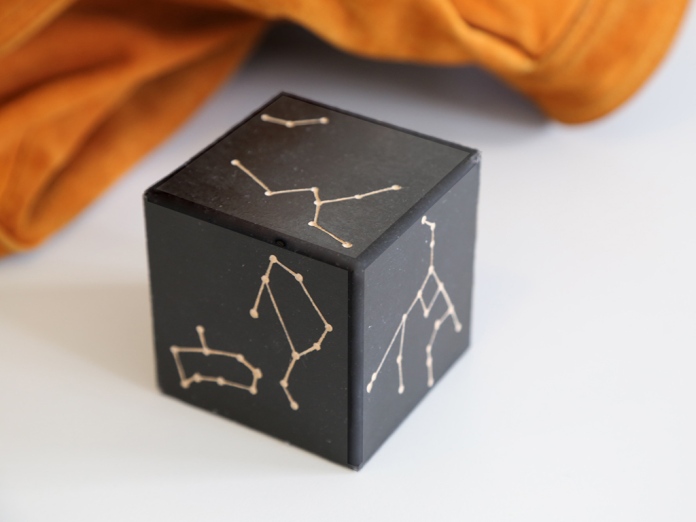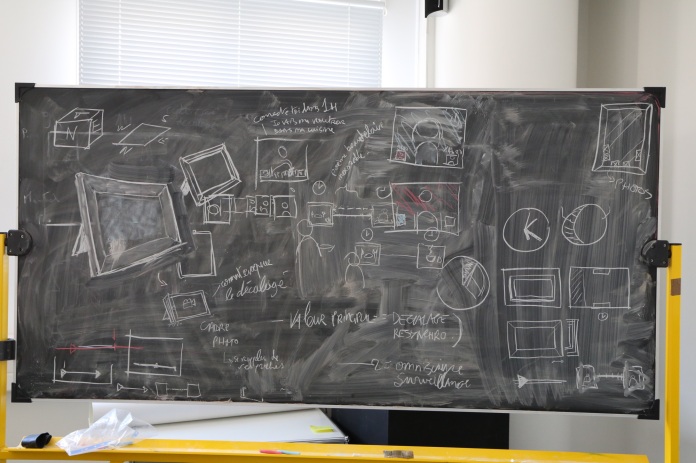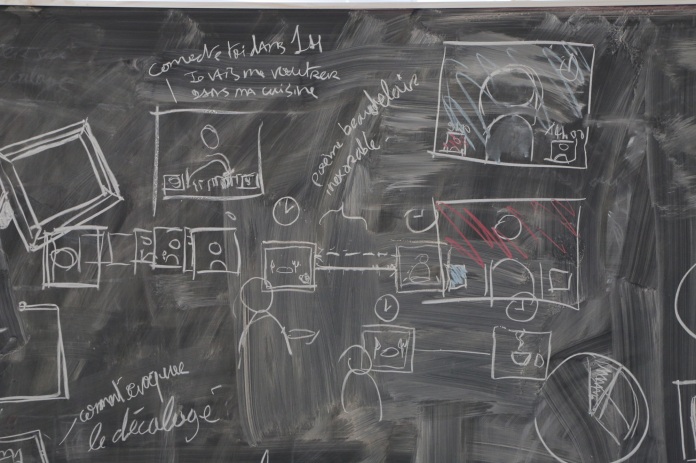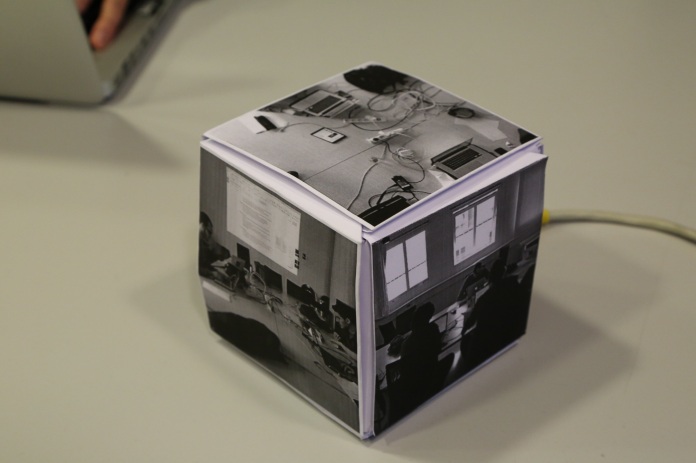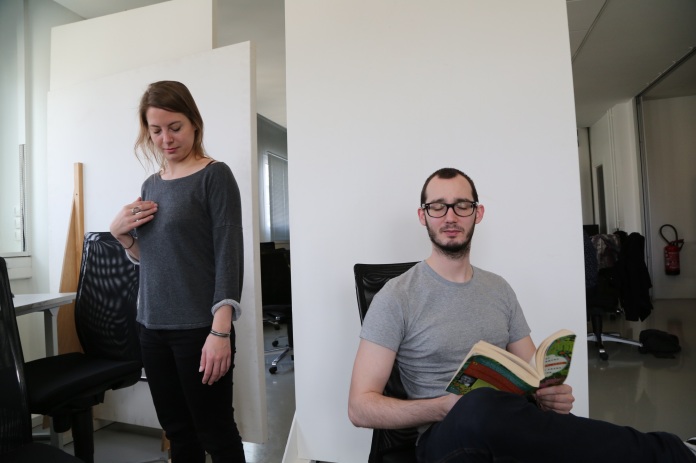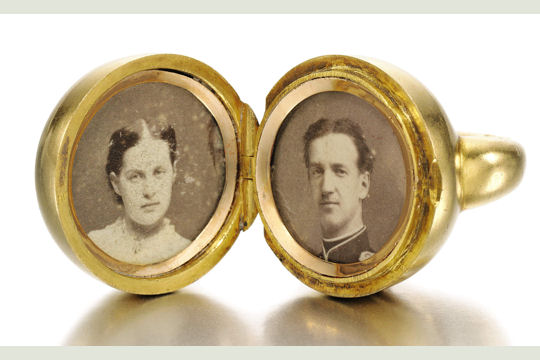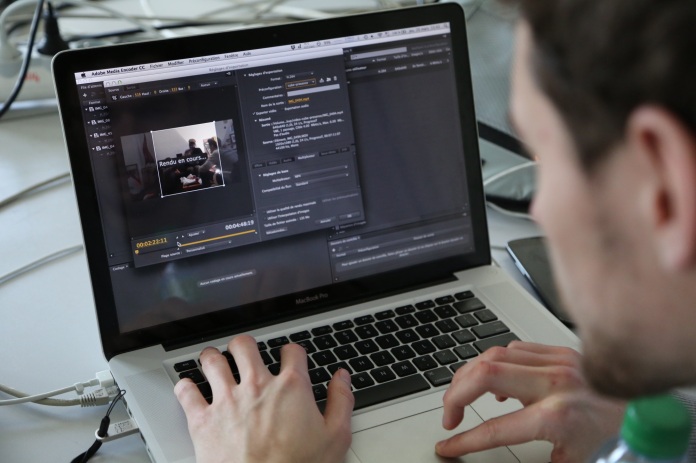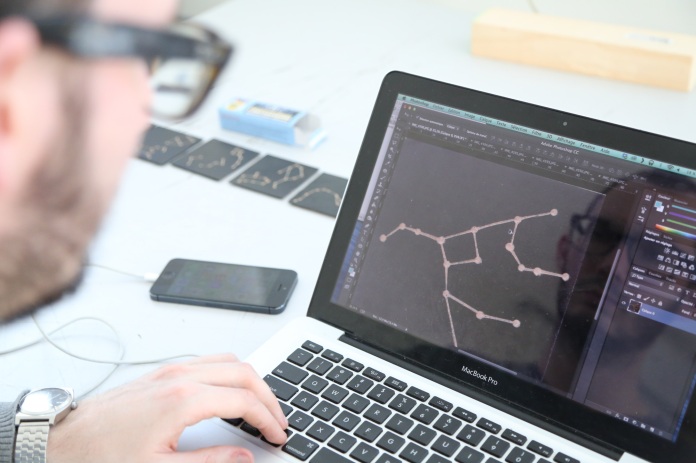TimeFrame – delayed skype to resynchronise your day time when living in two far countries.  Narrative image that shows the project in use – has to be completed by another visual/diagram that explains the concept
Narrative image that shows the project in use – has to be completed by another visual/diagram that explains the concept  Interface of the frame that is in – You can notice the choice we made to show the both videos: the delayed one and the real-time one. This choice will have to be tuned after having conducted first “audience-tests”. Our design choices aim at producing an uncanny enough feeling to engage the audience in a reflective process.
Interface of the frame that is in – You can notice the choice we made to show the both videos: the delayed one and the real-time one. This choice will have to be tuned after having conducted first “audience-tests”. Our design choices aim at producing an uncanny enough feeling to engage the audience in a reflective process.

Interface of the frame that is in Montreal – To be noticed, these are first tries produced during the workshop session. They will be redesigned, avoiding the “skype-like” aesthetic. Indeed, users would not stare at the frame all the time if it was always on. 

[youtube https://www.youtube.com/watch?v=wP9Gk8ild1o&w=853&h=480]
Photo shoot we made to prepare a video on the project (+ and extract of the video) – coming later The project that had the most potential is Time Frame. We think this because the societal issues it highlights are complexly mixed between desire and repulsion.
TimeFrame is a delayed skype that resynchronises your day time when living in two far countries
Abstract: what if you could wake up and go to bed together again. It has been 6 month that your lover lives in an other country and despite skype and the mobile phone efficiency you will never have this opportunity – except using Time Frame. It is a simple delayed skype-like video that resynchronises your day time. This “augmented photo frame” only has to be set once – enter your close one I.P. and it will set the video time-delay for you.
Issues: illusion of presence. Real need VS fake solution; living together VS unable to talk
First user reactions: (from our tester that leaves in Montreal)



